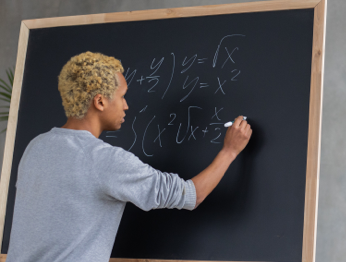
Mathematical anxiety, also referred to as “math phobia” is a common state of mind among students who often see the subject area as overly technical. As a result, there is an urgent need to find simple ways to solve and present complicated mathematical problems. Dr. Mahesha Narayana of the Department of Mathematics in The UWI Mona’s Faculty of Science and Technology and colleagues in India are on a mission to do just that. Their most recent step in this direction was the publication of their paper titled: On the differential transform method of solving boundary eigenvalue problems: An illustration which was recently published in the ZAMM‐Journal of Applied Mathematics and Mechanics.
In their paper they use a simple technique to arrive at the solution of a complicated problem. This research publication comes at an appropriate time as the Ministry of Education Youth and Information celebrates Math Week from March 28-April 1, 2021 under the theme, “Born to do Math.”
The paper explains how a simple transform technique (a ‘transform’ helps in converting a difficult task into an easier one) based on the Taylor series method can be used to solve a boundary eigen value problem (BEVP), subject to general boundary conditions, arising from a fluid dynamics problem. A Taylor series is an infinite power series of a continuous function that helps in approximating the eigen solution of the BEVP of interest.
In the authors’ technique, the boundary value problem (BVP) is first converted into an initial value problem (IVP) by replacing the right-end boundary conditions using initial guess conditions and also treating the eigenvalue as an additional unknown to obtain the recurrence relations between the coefficients of the Taylor series. An additional artificial differential equation and a normalization condition are used for closure, and the guess values together with the eigenvalue are solved using a well-known numerical method called the Newton-Raphson.
Even if some of the terms above are a little unfamiliar, what is significant about the study is its simplicity. When other methods of solution fail, this method works, and it takes very few terms to get a good approximation of the desired solution. Additionally, the method has been further simplified in the study to make it easy for even the less computer-savvy person to comfortably implement it on a computer.
With no great algorithms to learn, the method is so elegant that a high school student with little mental exertion and with the necessary guidance can follow it. The authors are convinced that the simplicity of the method in obtaining a reliable solution to a BEVP will help create interest in Mathematics among Jamaican students and pave the way for using other such simple techniques to handle challenging problems. “Believe us” they note “Mathematics is for everyone!” We believe them!

